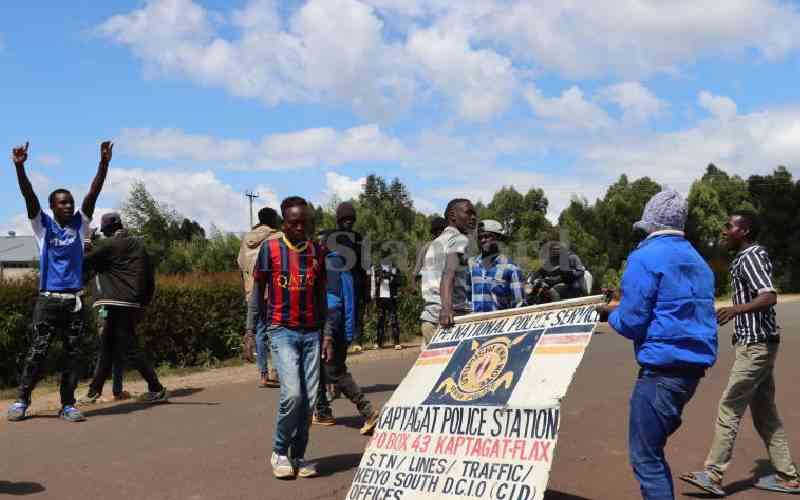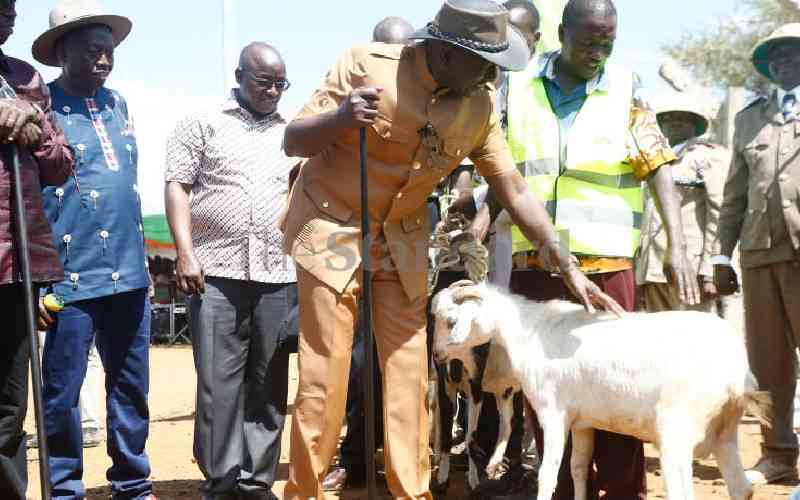By JECKONIA OTIENO
Kenya: Four armed men walked into Kristensen Jan’s home in Kisumu in broad daylight. They then strangled the 73-year–old Norwegian missionary before they were gunned down by police.
It later emerged that some of these outlaws who had been shot at the crime scene were police officers.
Nyanza Regional Coordinator Francis Mutie confirmed that these were indeed Administration Police officers but insisted that they were not under his command.
They had, he said, been deployed to the region from Nairobi.
Not much later, a state agency, the Independent Policing Oversight Authority (IPOA), released a survey which indicated that one in every three people interviewed during a survey on police services had been victims of police malpractice — like assault, brutality, falsification of evidence, bribery and threat of imprisonment.
Not only were these violations noted within the last 12 months, the Baseline Survey on Policing Standards and Gaps in Kenya indicated that misconduct by police is more prevalent in rural areas than in urban settings.
The fact that prevalence of police brutality in rural areas was more than double the rate reported in towns and cities spawns from public fear of police officers.
The fear is particularly acute among women are two times less likely to report cases of code of conduct violations compared to men.
James Kamau, a matatu conductor in Nairobi, says his deep-seated fear of the police would dissuade him from reporting when police officers violate the law. The survey corroborated such claims and reported that younger people were often the target of police brutality.
“The incidences of police violations is higher among younger people aged less than 35 with about three out of every five having experienced violations, while only 34 per cent of people above 35 having been violated.”
But it is not all gloom — three quarters of those interviewed, especially the youth, have grown more confident and will be more willing to report police misconduct in future.
Our attempts to get police reactions to these findings were in vain — calls and text messages to both the Inspector General of Police, David Kimaiyo and Police Spokesperson, Gatiria Mboroki went unanswered.
Nevertheless, the Baseline Survey on Policing Standards and Gaps in Kenya, was able to provide some insight into the thinking of members of the police service.
It says most officers who have watched misconduct like bribery, excessive use of force, unwarranted shooting and threats of imprisonment do nothing about it.
Stay informed. Subscribe to our newsletter
About 37 per cent do nothing because they believe corruption is so pervasive that nothing can be done, while 15 per cent of the juniors keep mum for fear of reprisals.
The Independent Policing Oversight Authority notes in this survey it released recently that 55 per cent of officers believe services will improve once the issue of poor pay is addressed, while for 24 per cent of the respondents, the provision of modern equipment to fight crime and better housing would contribute significantly to better service delivery.
Fear of the police officers is a great miscarriage of justice. The extra-judicial killings of members of the outlawed group Mungiki triggered public protests and ultimately led the setting up of an ad hoc commission to put focus on the development of structures to facilitate police reforms. Part of the reforms, also instigated by the role the police played to exacerbate the violence after the 2007 General Elections, involved boosting the capacity of law enforcement agencies to discharge their duties. An interim report by the National Taskforce on Police Reforms headed by Justice Phillip Ransley noted that the number of police officers increased significantly between 2005 and 2009. In 2005, the Kenya National Bureau of Statistics (KNBS) recorded that there were 32,901 regular police officers and 19,056 Administration Police (AP) officers.
By 2009, the number of both categories of officers had increased significantly with the AP numbers rising by 65 per cent even as the number of regular police increased by 29 per cent. Government projections by a state agency, the Kenya National Bureau of Statistics, indicated that 43,614 APs would be in the force by 2011 to boost the number of regular police. Police spokesperson Gatiria Mboroki told The Standard this week that they have 42,000 regular police officers in the service, which would hypothetically put the ratio of police to the public at one officer for every 455 people.
Even with this increase it must not be lost that the population of Kenya has been correspondingly increasing, thus maintaining what is essentially the status quo.
In 2003 the police-to-citizen ratio stood at one officer to 676 people. By 2009 the ratio had reduced, albeit slightly to one officer to 533 people.
The United Nations recommends that there should be 220 police officers for every 100,000 people; this translates to one officer for every 454 Kenyans, a benchmark that the government is still struggling to achieve.
Kenya’s situation is further aggravated by the high dignitaries who require police protection, thus taking away a good number of officers who would otherwise be on the beat providing security to citizens.
Even before the taskforce wound up its operations and handed its report to former president Mwai Kibaki, its members had proposed that some of the 5,000 officers assigned to provide dignitaries with protection be reassigned.
The number of those needing police protection has more than doubled with the adoption of the devolved system of government that has substantially increased the number of elected leaders.
With an overstretched, overworked and underpaid police service, apathy and corruption is a natural consequence.
The case in which Joshua Waiganjo has been charged with impersonating police officers raises serious questions about the involvement of criminal elements in the police force.
Shortly after Waiganjo’s arrest some senior police officers were interdicted after more than 40 police officers were ambushed and killed in Suguta Valley under suspicious circumstances.
Despite these challenges, Kenya still has the lowest crime record in the region and its East African neighbours have fared less favourably.
The European Institute for Crime Prevention and Control, International Statistics on Crime and Justice, 2011 notes that Kenya had an assault rate of 35.9 while Uganda reported a rate of 92.7.
The UN office on Drugs and Crime, 2004 puts Kenya at a murder index per 100,000 of 20.8 compared to Uganda’s 25.2; Tanzania’s 26.1 and Rwanda’s 26.6.
The police service’s failure to perform has been a topic of debate with resurgent crime in towns across the country. The Ransley Report underscored the fact that unpreparedness to deal with crime was a direct result of lack of capacity.
“In reviewing the state of preparedness of the police to combat insecurity and other forms of emerging security challenges occasioned by national and international threats, the taskforce concluded that the police are ill-prepared.
This is particularly so taking into account the tooling, logistical and technological incapacity of the police as observed elsewhere in this report,” says the report.
With this reality, one could ask is the police capable of weeding out the rotten apples in the force? The jury is still out there.
 The Standard Group Plc is a
multi-media organization with investments in media platforms spanning newspaper
print operations, television, radio broadcasting, digital and online services. The
Standard Group is recognized as a leading multi-media house in Kenya with a key
influence in matters of national and international interest.
The Standard Group Plc is a
multi-media organization with investments in media platforms spanning newspaper
print operations, television, radio broadcasting, digital and online services. The
Standard Group is recognized as a leading multi-media house in Kenya with a key
influence in matters of national and international interest.
 The Standard Group Plc is a
multi-media organization with investments in media platforms spanning newspaper
print operations, television, radio broadcasting, digital and online services. The
Standard Group is recognized as a leading multi-media house in Kenya with a key
influence in matters of national and international interest.
The Standard Group Plc is a
multi-media organization with investments in media platforms spanning newspaper
print operations, television, radio broadcasting, digital and online services. The
Standard Group is recognized as a leading multi-media house in Kenya with a key
influence in matters of national and international interest.








